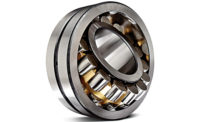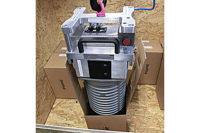Over the last quarter century, SolarWorld AG has produced countless silicon wafers, solar cells and photovoltaic modules—while generating lots of media attention.
In 2007, the company purchased a Hillsboro, OR, facility from the Komatsu Group and made it SolarWorld’s U.S. headquarters. It’s the largest solar cell manufacturing facility in North America. The next year, SolarWorld announced a bid to buy the German automaker Opel from General Motors for 1 billion Euros. GM immediately rejected the bid.
Around the same time, the company made a commitment to significantly reduce its reportable OSHA injury rate at Hillsboro. By 2008, the injury rate there had increased to 5.0. Plant management set a goal to reduce injuries by 50 percent.
Because 70 percent of the injuries were related to poor ergonomics, SolarWorld turned to Humantech Inc. for help. Humantech is a consulting firm that specializes in ergonomics training, assessments, software and program development.
“Maintaining safety is one of our core values, so we had to identify the highest-risk areas and fix them,” says Bryan Trotter, health and safety environmental manager for SolarWorld Inc.’s Hillsboro facility. “Our goal is to have zero injuries.”
SolarWorld initiated a two-step plan to meet this challenge. First, its safety, ergonomics and engineering teams ergonomically assessed each workstation to identify the plant’s highest-risk areas, job activities and worker postures.
The teams used Humantech’s Baseline Risk Identification of Ergonomic Factors (BRIEF) survey and BRIEF Exposure Scoring Technique (BEST) prioritization methodology. Video was also used to capture the functions and requirements of each job task.
Second, the teams identified the top three high-risk tasks in each department and assigned an engineer to ergonomically improve each task. The engineer had to reduce the task’s BEST methodology risk rating from high or very high, to medium or low.
Of the several high-risk tasks identified, lid lifting and removing glass from a metal plate caused the most frequent injuries. In many workcells, a technician had to remove a 50-pound lid from a filter 8 to 10 times per shift using only a wrench and a wing nut. After analysis, a pneumatic lid lifter was installed on all 81 filters in the plant. The lid lifter eliminates all of the technician’s awkward hand postures, forces and back twisting.
At a different workstation, operators were required to pry extremely hot glass (400 F) from a metal plate and manually scrape epoxy off the metal 100 times per day. This task contributed to the workers’ poor posture, and caused the inhalation of debris and foreign substances.
After review, a cleaning tool with pneumatic blade was fabricated. Operators now load the assembly into the cleaning tool, which scrapes off the glass and epoxy, and eliminates poor hand postures.
No injuries have been reported since the lid lifter and cleaning tool have been installed, says Trotter, enabling the company to downgrade the BEST scores on these tasks to low risk. More importantly, the plant overall has met its goal to cut reportable injuries by half.
For more information on ergonomic assessment tools, call 734-663-6707 or visit www.humantech.com.







